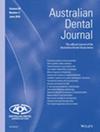E-scooters and maxillofacial fractures: a seven-year multi-centre retrospective review
Abstract
Background
Standing electric scooters (e-scooters) are a cost-effective and environmentally-friendly transport alternative, but also elicit substantial concern regarding associated craniofacial injuries. This study aims to describe the patient factors, procedural factors and post-operative outcomes of maxillofacial fractures caused by e-scooter accidents.
Methods
Retrospective chart review of patients aged 18 years or older who were surgically treated for these injuries in 2014–2020 at two Australian tertiary hospitals.
Results
There were 18 cases included. Most cases were male (66%). The mean age was 35 years. Common risk factors were alcohol use (86%) and lack of helmet use (62%). The most common fracture pattern was zygomatico-maxillary complex (ZMC) fractures (50%). There were no associated systemic injuries. Mean operation timing was 12 days post-injury for ZMC fractures and 3 days post-injury for condyle fractures. For ZMC fractures, the most common method of fixation was 2-point fixation (66%). For condyle fractures, the most common surgical approach was arch bars only (83%). Post-operative complications were reported in six cases, with malocclusion being the most common (n = 3). Revision surgeries were performed in two cases.
Conclusions
Maxillofacial fractures associated with e-scooter accidents appear to be increasing in incidence. Robust longitudinal evaluations with larger sample sizes are required to better understand associated presentations, surgical approaches and post-operative complications.

 求助内容:
求助内容: 应助结果提醒方式:
应助结果提醒方式:


